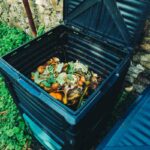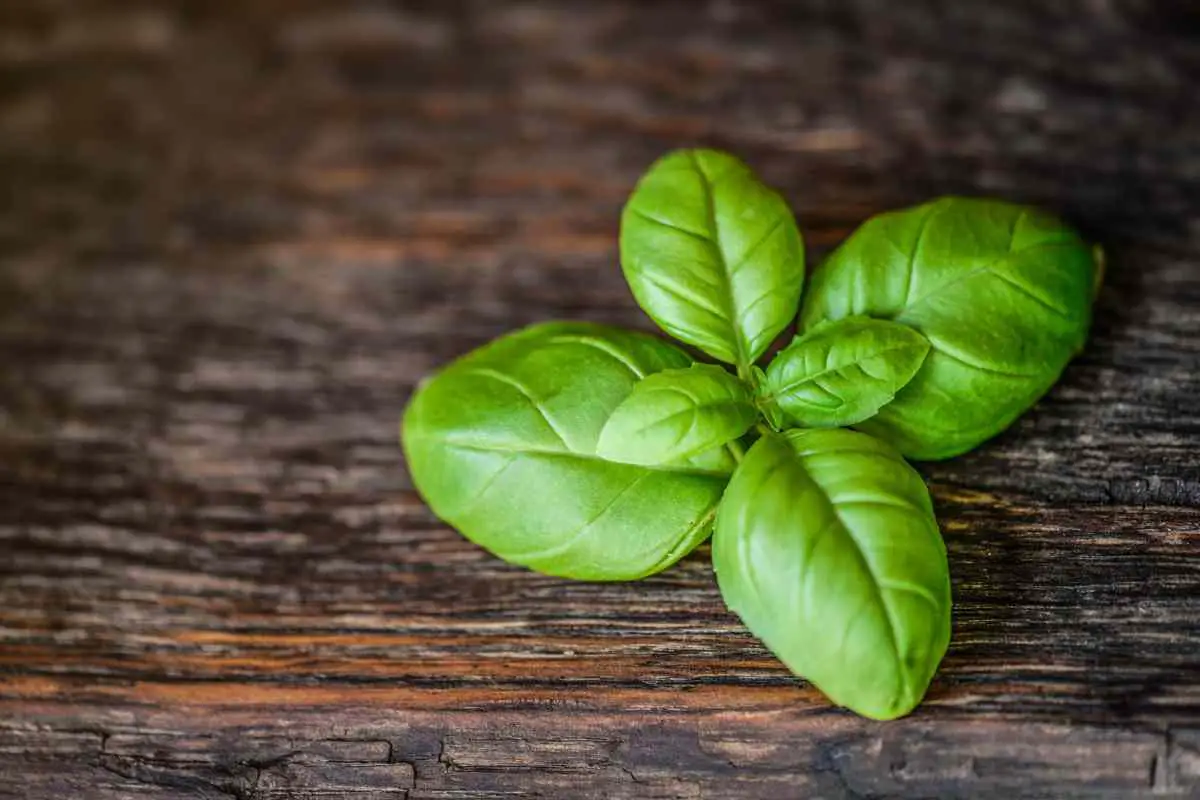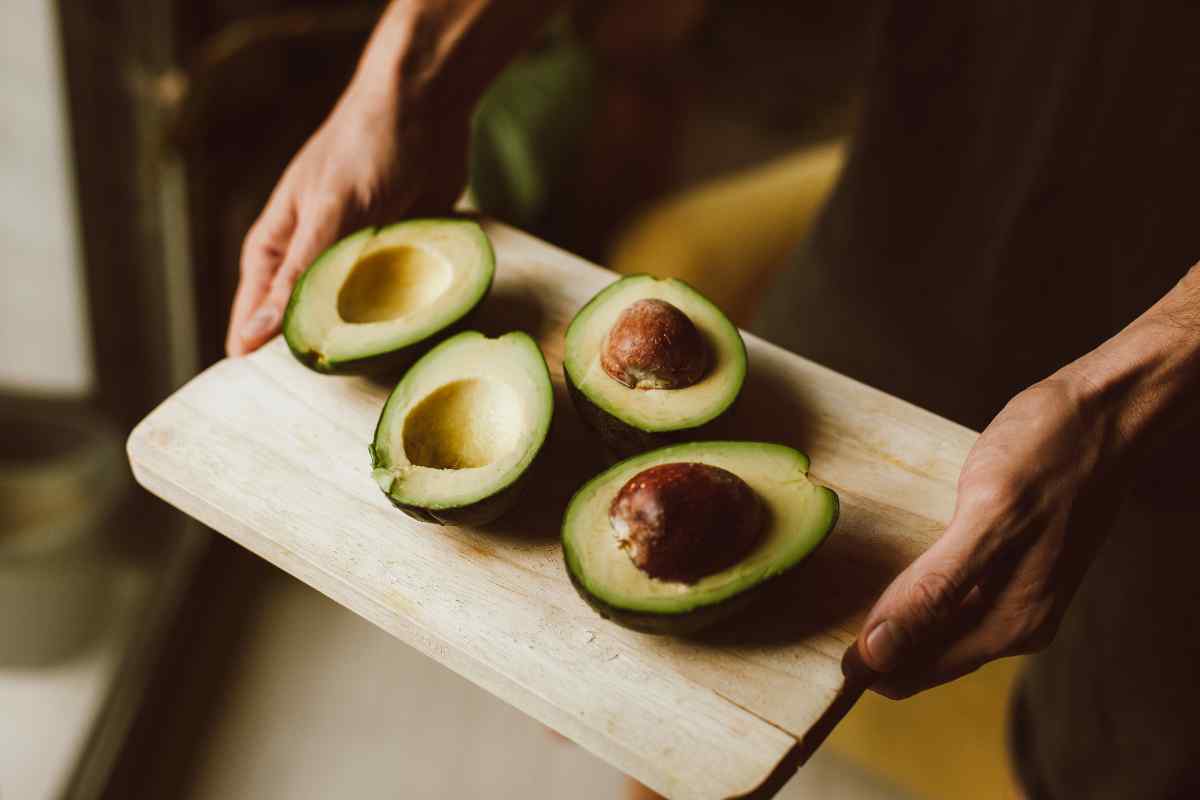Tomatoes are the most common garden vegetables in gardens today. That being said, diseases that affect tomatoes are very common as well.
There are many variations of tomatoes, including everything from tiny, grape tomatoes to much larger Sungold and Beefsteak Tomatoes.
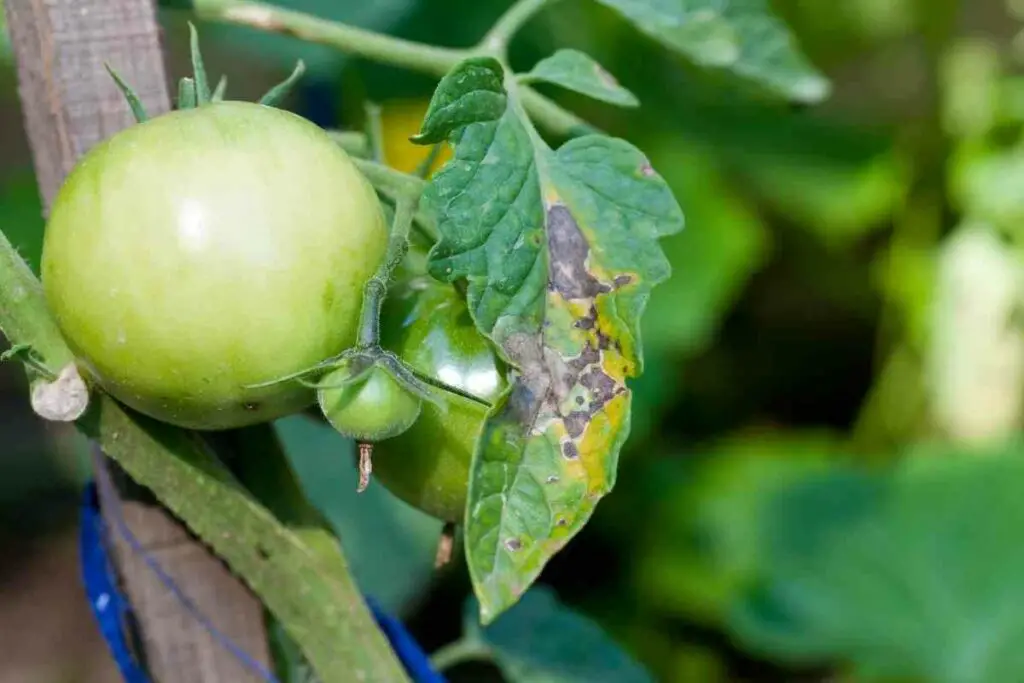
The number of diseases that affect tomatoes are so numerous and varied that it’s difficult to compile them all in a single article.
There are fungus diseases, viral infections, and bacterial. Fortunately, many of these diseases aren’t as prevalent.
What to Expect? This guide will help you identify the type of disease affecting your tomatoes in time to do something about it. Just because a disease has made its way into your tomato garden, doesn’t mean that the end is near and you have to give your tomatoes up for dead.
Table of Contents
What Kind of Fungal Diseases Affect Tomatoes?
Fungi attacks on your tomato plants are often some of the nastiest, spreading across the red skin surface of the tomato, turning red to black, brown, or spongy nastiness.
Of course, it’s doing damage on a much deeper level as well.
1. Black Mold
You often hear about black mold in the home and for good reason.
Black mold is nasty, especially when it gets into your respiratory system, causing any number of side effects, nervous system disorders, and possibly death.
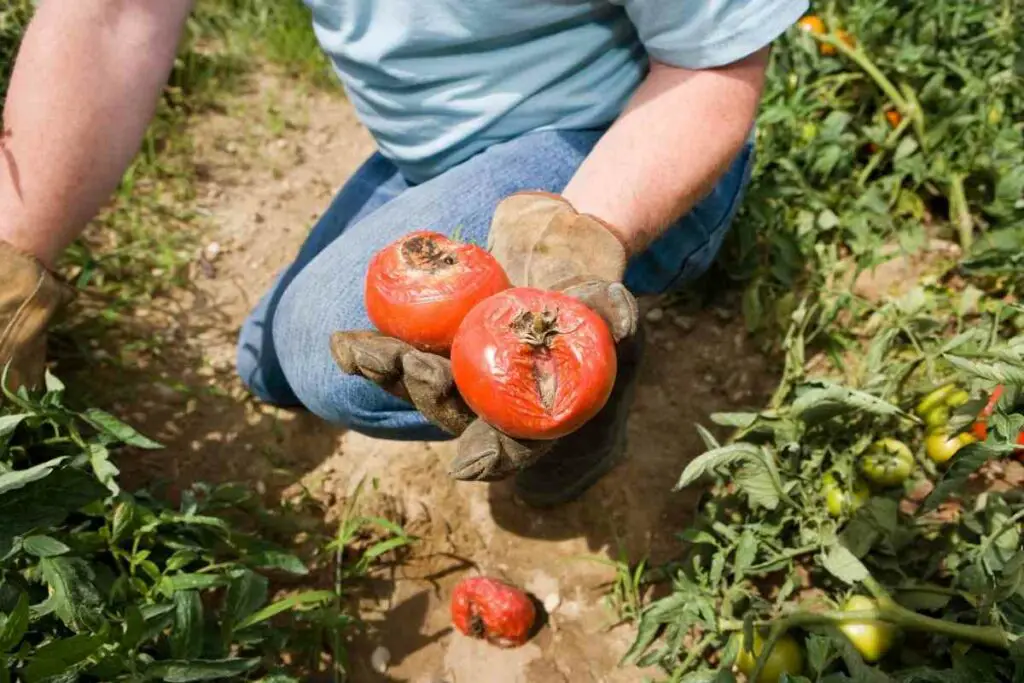
Black mold also affects tomatoes. Early signs of the disease in your tomato plants are simple, small lesions.
There’s nothing simple about it, however, and if you see black lesions with a drier, white and black center, it’s likely black mold.
You’ll also notice that the red skin of the tomato tends to wrinkle up on the perimeter of the lesions, where the black meets the red.
Black mold infections typically occur in the summer, when it’s hot and humid. Mold of most kinds flourish in humidity and black mold is no exception.
How to Control or Eliminate Black Mold
Black mold rears its ugly head most often when there have been frequent and heavy rains.
Immediate treatment with a fungicide that specifically targets Alternaria Stem Cankers. You should also harvest earlier because it’s better to get a half-grown tomato than a rotten one.
It’s also a good idea to ensure your tomatoes aren’t damaged or suffering from too much sun exposure. Any wounds to the vegetable are entry points for black mold.
2. Early Blight
Another rainy weather fungi, Early Blight is a very common fungal disease.
It starts on the very edges of the tomato plant leaves and spreads inward, turning the leaf edges brown/black, with the perimeter of the discoloration turning yellow.
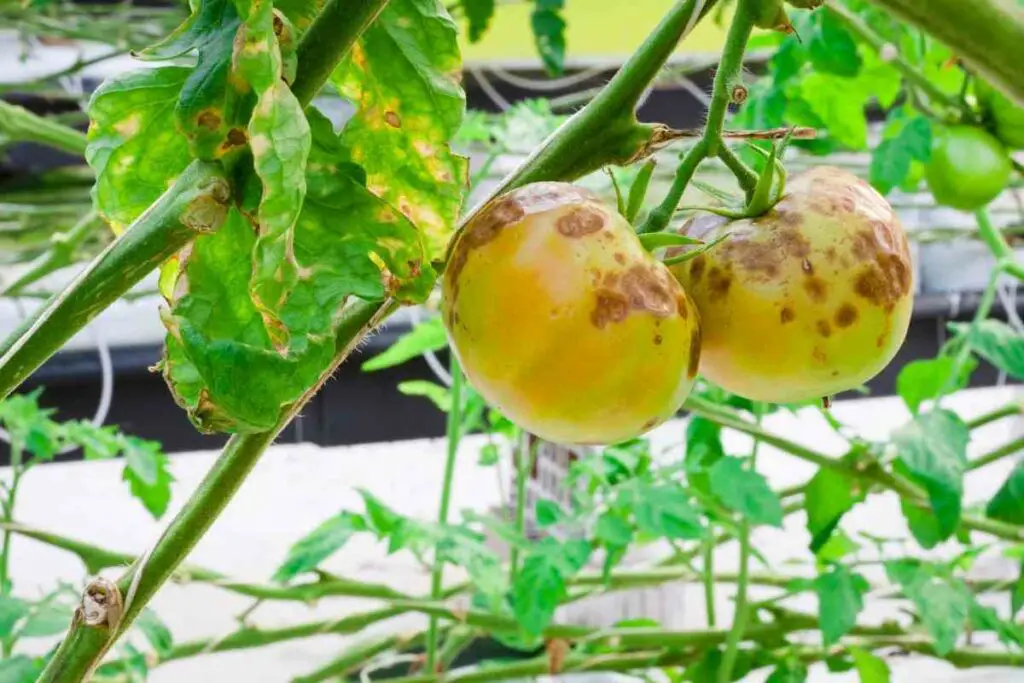
A tomato plant infected with early blight will also present rings on the stem and leaves. These rings/spots are black and yellow within.
The fungus is spread through the rain bouncing off objects that hold microscopic spores and then landing on the plant.
How to Control or Eliminate Early Blight
Prune away any leaves that appear infected or have rings, whether it’s on the edges of the leaves or spots in the center of the leaves.
If it’s really bad, use a standard fungicide to go after it.
Heads Up! Avoid throwing any of the infected portions of the plant that you cut off in your compost. It will ruin your entire compost and spread the fungus to any plants you use the compost with.
3. White Mold
If we include black mold, we may as well include black mold.
White mold is a nasty fungal infection but, fortunately, it’s not one of the most common.
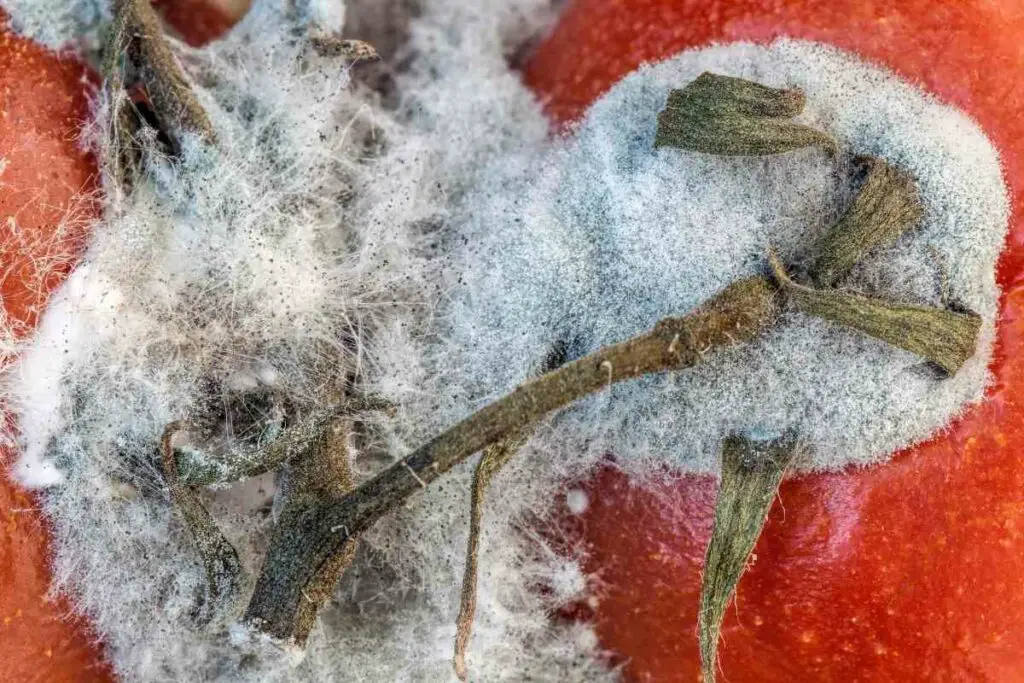
It presents itself (in the beginning) as lesions that look nasty and wet and it spreads along the stem, using it as a sort of highway to infect the entire plant.
That’s why white mold often goes under the term, stem rot.
If you allow it to gain a foothold, it will destroy the entire plant so rapidly that you’ll have to pull it, discard it, and remove all the soil the plant was in as well.
How to Control or Eliminate White Mold
The only way to truly prevent white mold is to use subsurface drip irrigation.
Unfortunately, not everyone can do that. Since the original infestation almost always occurs via a dead flower that browns, wilts, and contacts the plant, your focus should be there.
Once a flower on the tomato plant dies, remove it. It’s a waste of the plant’s energy anyway and the threat of white mold is primarily through the flower.
4. Septoria Leaf Spot
You’ll recognize this immediately by the tiny black spots all over the leaves.
The black spots will sometimes have tiny, yellowish centers/cores.
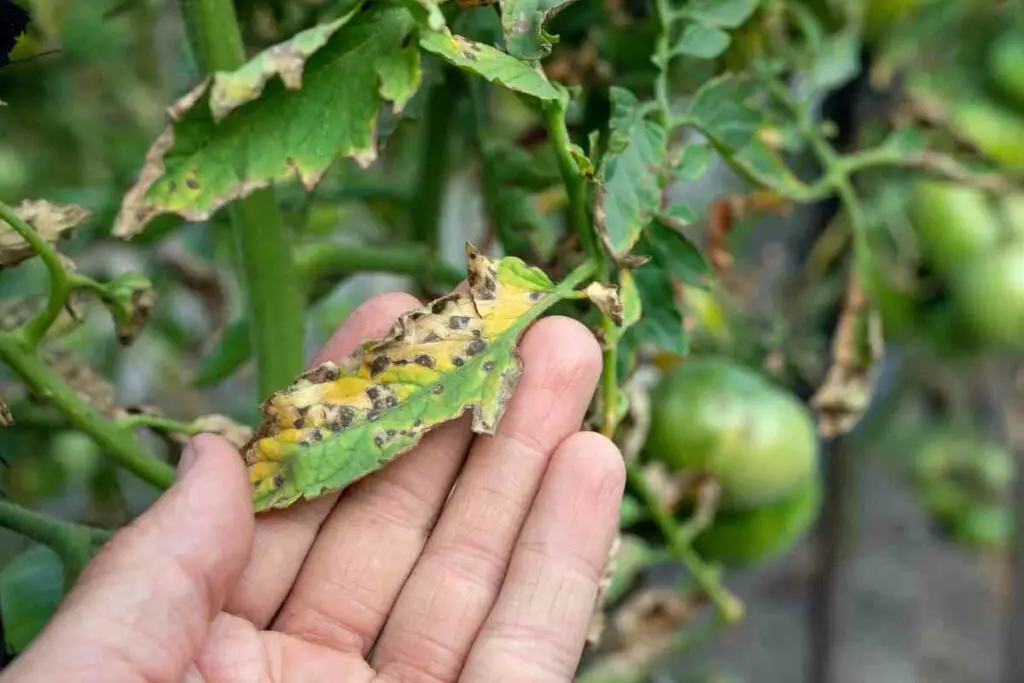
This is normally how the disease manifests itself in the very beginning. If you spot it quickly enough, you can control or even eliminate it.
Unfortunately – It’s fairly common since everything seems to spread it, including wind, yourself, rain, and insects.
If you don’t do anything about it, the spots will grow, combine, and spread across all of the leaves, destroying the plant’s ability to conduct photosynthesis.
How to Control or Eliminate Septoria Leaf Spot
Carefully prune away any leaves that have a lot of spots on them and try to remove any of the items around the plant that may have something to do with spreading it.
In severe situations, you should use a fungicide to reduce and control the disease.
5. Southern Blight
Southern blight will typically infect tomato plants when temperatures are high and humid—85°F or higher.
The lesions start at the base of the plant, along the stem, and move upward if the growth of the fungus isn’t interrupted.
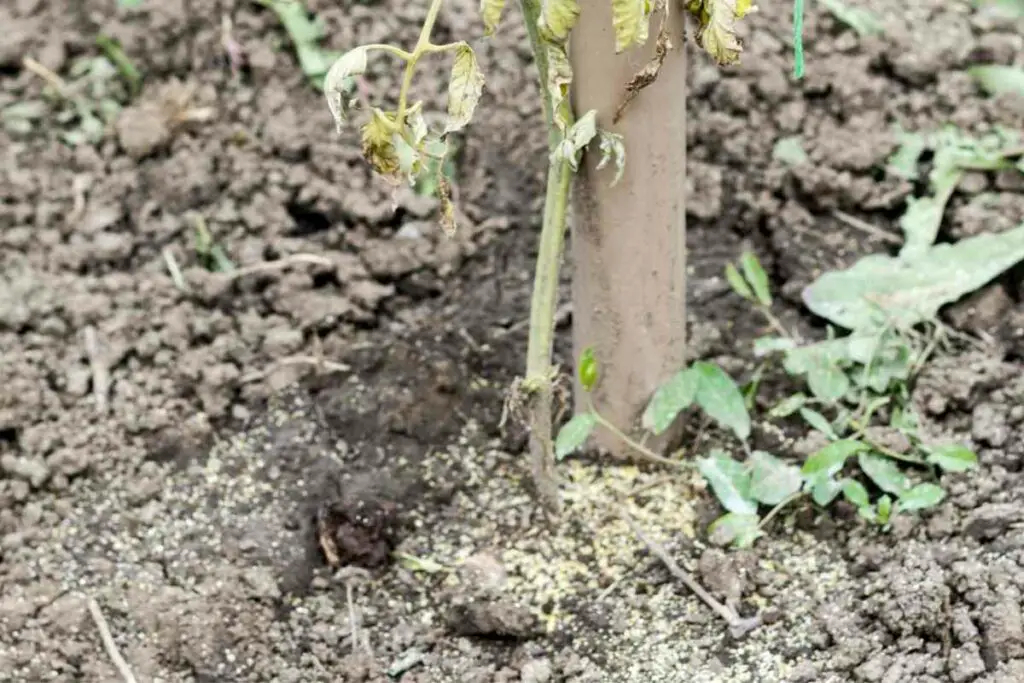
The plant will wilt eventually, with eventually arriving pretty quickly. Threads of the fungus will show up on the base of the stem as well, spreading to the nearby soil.
While you can use a fungicide to attempt some semblance of control over the disease, the best preventative method is crop rotation.
How to Control or Eliminate Southern Blight
One of the things that most people like to do is plant tomatoes in pots.
The problem with pots is that they hold heat in and heat is a necessary catalyst for Southern Blight.
Planting tomatoes in the ground, with plenty of space in between them, will minimize the risk.
What Kind of Bacteria Affect Tomato Plants?
Bacterial infections in tomato plants are just as prevalent as fungal infections.
The good news is they are easy to spot for the most part and either controllable or something you can eliminate altogether.
1. Bacterial Speck
It looks just like it sounds.
Bacterial Speck typically affects tomato plants in cooler weather, when temperatures drop below 75°F.
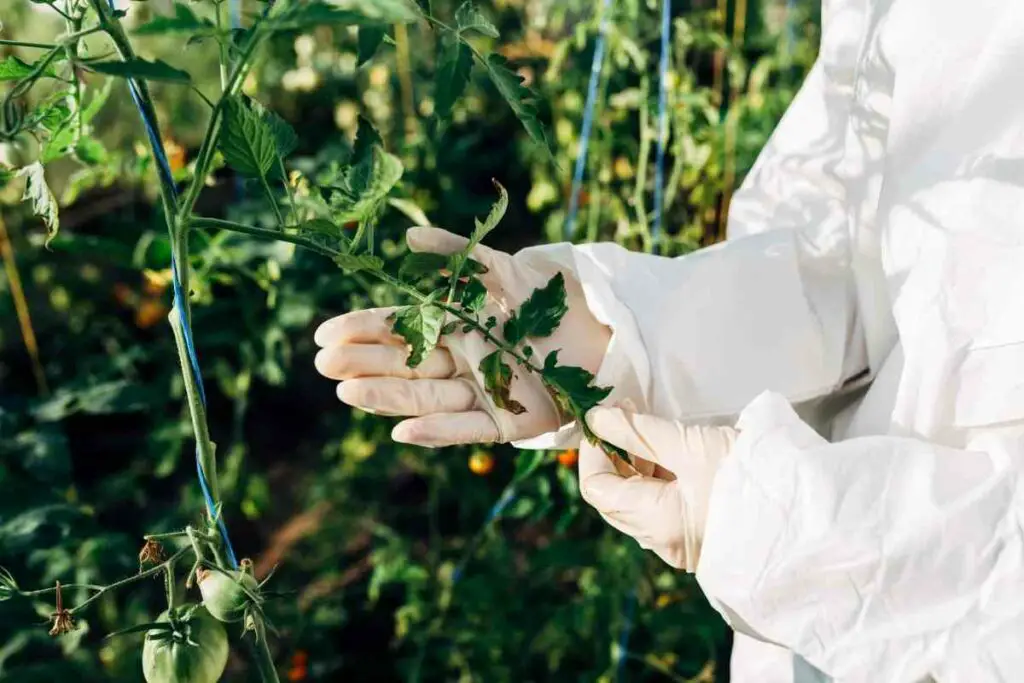
Anything above that temperature halts the spread of the infection in its tracks.
It looks just like it sounds, with tiny specks inflicted on the surface of the leaves.
They are either dark brown or yellow in nature.
Untreated – The leaf will eventually brown and curl up on the edges.
Bacterial speck is a soil disease and that’s how it tends to spread.
How to Control or Eliminate Bacterial Speck
Copper sprays are often advised to control Bacterial Speck.
Or, you can ensure that you plant your tomatoes in a timeframe where the temperatures will remain higher than 75°F.
Once the tomatoes are completely harvested for the year, rotate corn to the soil instead.
Over the course of the corn season, the bacteria will have time to die off.
2. Bacterial Canker
It doesn’t look much like a canker.
You’ll notice the edges of the tomato leaves are browning and curling inward, especially on the sides of the leaves, rather than the tips.
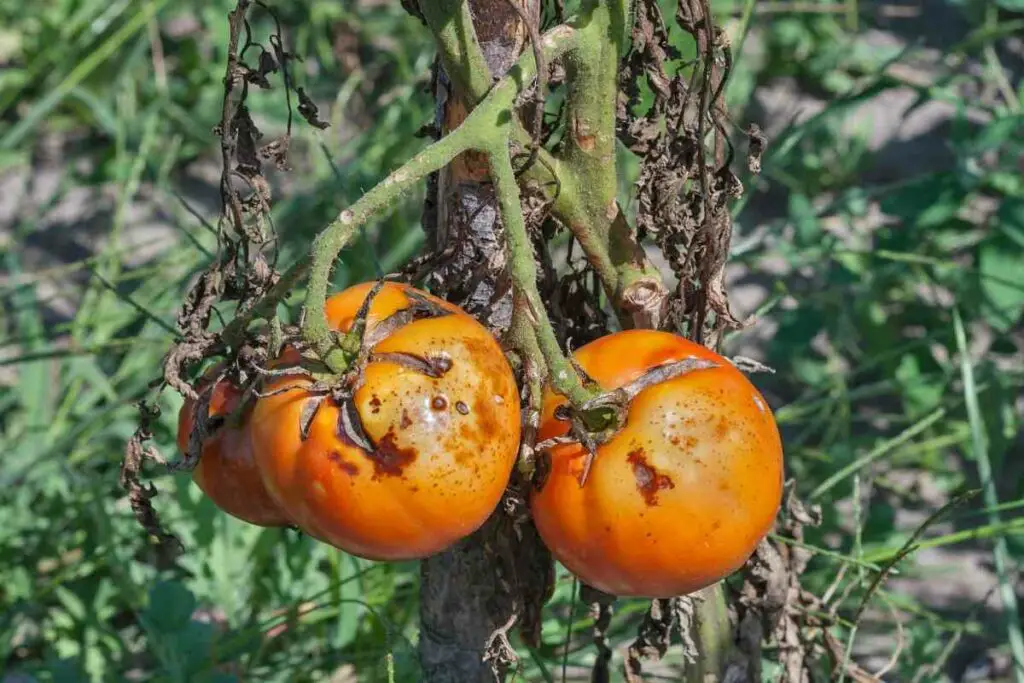
This happens to be one of the most common bacterial infections in tomato plants and almost anything can spread it.
Untreated – The leaves will continue to curl up, turn darker brown, wilt, and fall off.
Also, if it’s not treated soon, the bacteria can spread to the stem, where it will go on to impact the tomato fruit itself.
How to Control or eliminate Bacterial Canker
There is really no way to completely halt the disease.
What you want to do is avoid any gardening or planting tomatoes in wet weather conditions. Wet and humid conditions are something this bacteria thrives in.
3. Bacterial Spot
Though it looks much like the two above bacterial infections, bacterial spot is different.
It begins with patterns of tiny, brown, and yellowish spots on the surface of the leaves. The disease comes primarily from infected seeds, so it’s difficult to avoid or control intrusion.
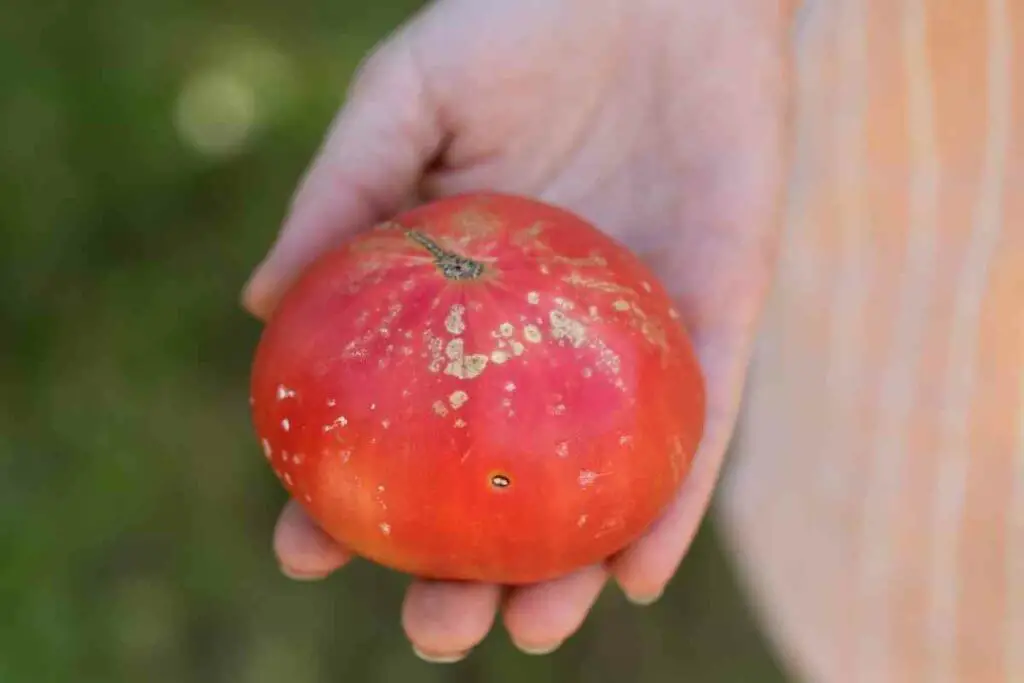
Once the plant grows, the spread of the bacterial infection to other plants is very hard to control.
The small spots spread out across the leaves will eventually grow and connect with one another, creating larger blotches on the leaves.
How to Control or Eliminate Bacterial Spot
Copper sprays are the best way to control bacterial spots.
In Fact – Copper sprays are pretty much the go-to answer for all of the above bacterial infections as well.
Some bacteria have developed a resistance to copper sprays, however. If that’s the case with yours, combine the use of copper spray with that of a fungicide.
What Kind of Viral Infections Affect Tomato Plants?
If bacteria and fungus weren’t enough, viral infections can seriously traumatize your tomato plants as well.
Most of the time, viruses are transmitted to tomatoes from insects (not the good kind either).
1. Tobacco Mosaic Virus
According to botanists, the Tobacco Mosaic Virus is well over a century old and is still one of the most common viruses to attack tomato plants.
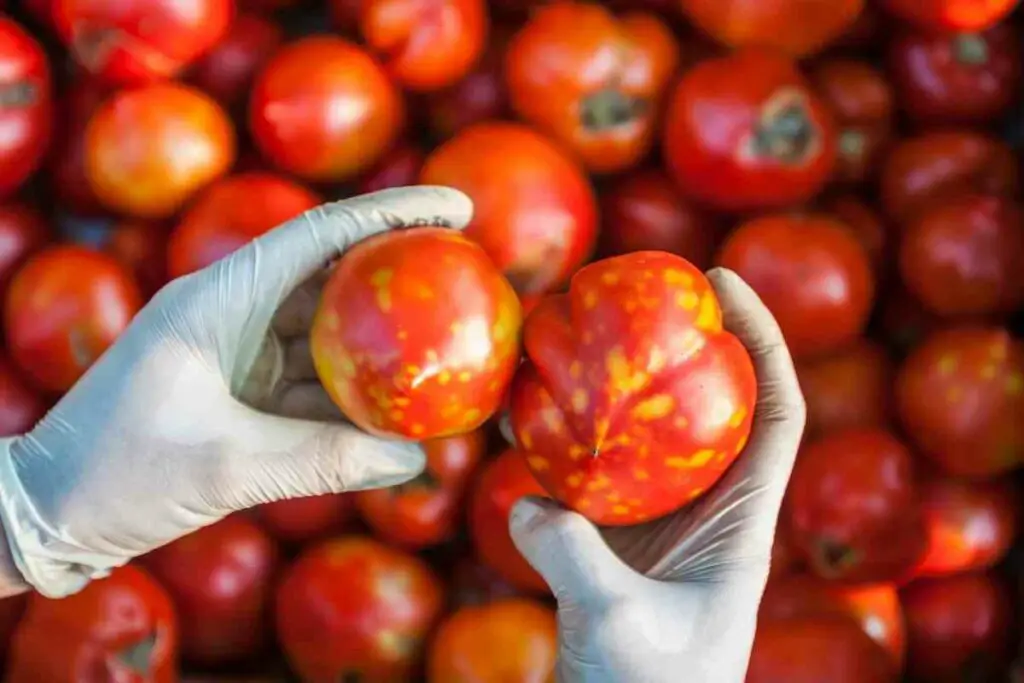
It’s not a pretty one either, as it can easily devastate every tomato plant in your garden, along with other, non-tomato plants as well.
As its name implies, the Tobacco Mosaic Virus presents itself in a mosaic pattern on the leaves. It will basically shred them, turning them into something resembling fern leaves.
As the disease continues to work, it will create dead tissue in the tomato fruits themselves.
How to Control or Eliminate the Tobacco Mosaic Virus
Be sure to sterilize all of your gardening equipment before you use them, each and every time.
You should also ensure that you are not purchasing plant transplants and seeds that have not been treated to eliminate the disease.
You can also look for seeds labeled:
- Estiva
- Geronimo
- Arbason
2. Alfalfa Mosaic Virus
If you grow your tomato plants anywhere near alfalfa, the chances of your tomato plant becoming infected increase.
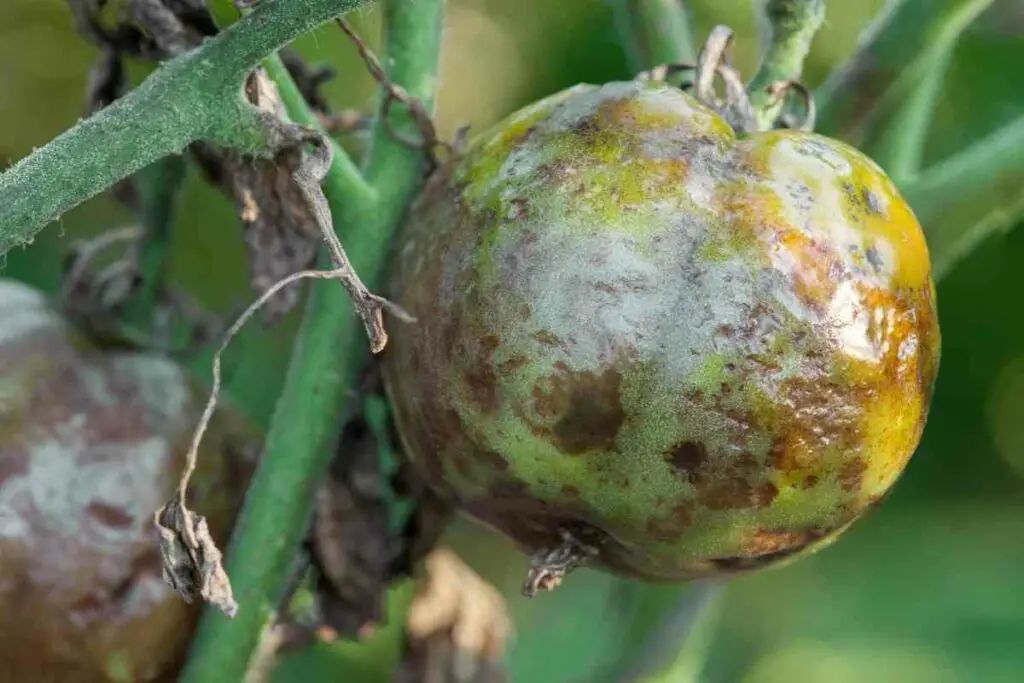
The virus is also transferred via aphids that travel from alfalfa plants to your tomato plants.
Your tomatoes will develop rings of dead tomato tissue and the leaves will yellow, brown, and wilt over time.
From Experience – Once the disease has taken hold in your tomato plants, there is very little you can do to stop it.
How to Prevent or Eliminate Alfalfa Mosaic Virus
The only advice out there to stop the disease from infecting your tomato plants is to use silver polyethylene mulch on top of your tomato planting beds.
There is no spray, fungicide, copper, or otherwise, that will control, reverse, or eliminate the Alfalfa Mosaic Virus.
You should also avoid Alfalfa altogether, at least not anywhere near your tomato plants.
3. Spotted Wilt Virus
Spotted Wilt is a nasty virus because it affects far more than just tomato plants.
If it gets into your tomatoes, the odds are good that it’s already in your other plants as well. As a tropical disease, it’s far more prevalent in hot, humid weather.
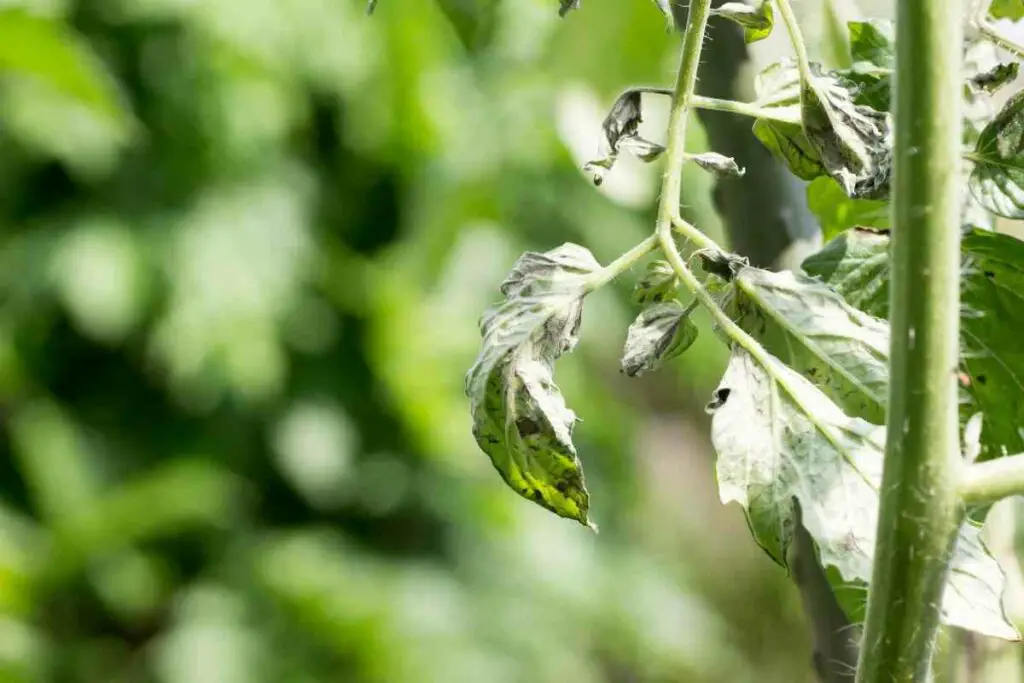
It presents itself in splotches across the flesh of each tomato.
The splotches cause cracks and yellowing in the fruit as well. It turns the leaves a unique shade of yellow as well, so it’s certainly something that is immediately noticeable.
The disease is primarily spread by little insects called “thrips.”
How to Control or Eliminate Tomato Spotted Wilt Virus
Controlling the disease is a matter of controlling the thrips.
This means the use of insecticides that kill them immediately is your best weapon.
Once a thrip feeds on the tomato plant, it will spread the infection from itself to the plant.
Red Defender tomatoes, Summerpick, and Quincy are the best tomato varieties you can pick if you want to avoid the disease altogether.
4. What is Phytoplasma?
Phytoplasma, like bacteria, is a microbe that also affects tomato plants.
The only difference, aside from its classification, is the fact that the phytoplasma is much smaller than a traditional bacteria.
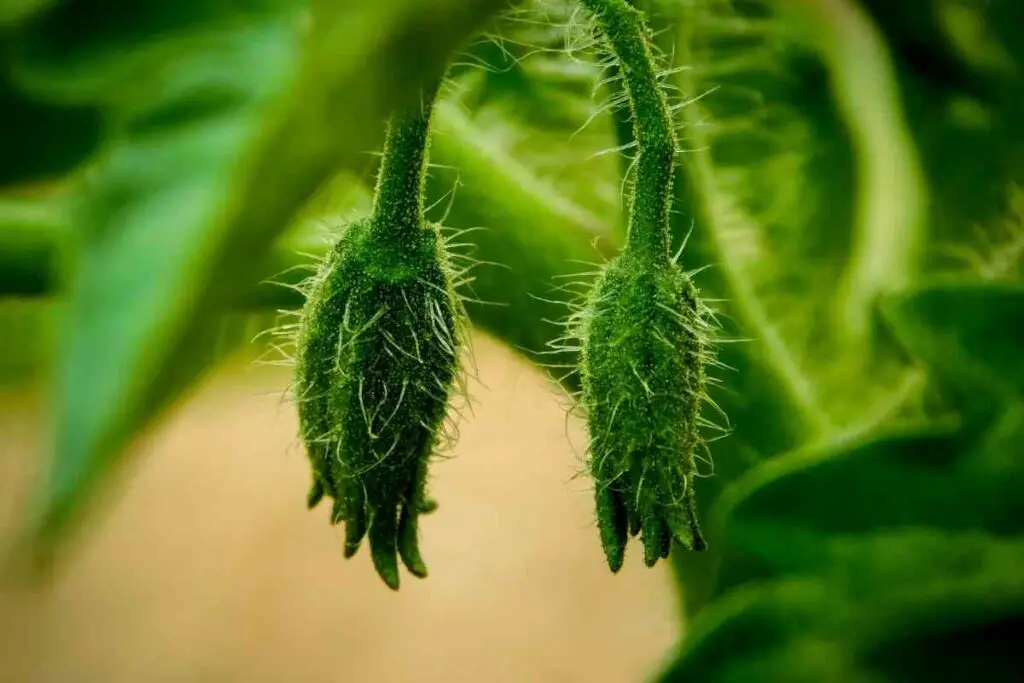
The singular disease that phytoplasma causes is known as Tomato Big Bud.
Take a Closer Look – You can recognize this immediately because the buds, where normally a fruit would bloom, grow to gigantic proportions and never produce anything.
The leaves will carry a yellowish hue that never quite becomes fully yellow and your tomato plant will have an overall bushy appearance.
The disease is primarily transferred by the beet leafhopper, so an insecticide is the only real recourse.
How to Control or Eliminate Tomato Big Bud
You have to remove and destroy the infected plants so the disease doesn’t ultimately spread to other tomato plants in your garden.
There isn’t a whole lot you can do for the infected plants, so removal is the best option.
You’ll also want to incorporate insecticides to destroy any beet leafhoppers that can potentially spread the disease to all of the tomato plants in your garden.
Pyrethrins and azadirachtins are the best choices.
Environmental Factors
Environmental factors are not really diseases but they will have an effect on your tomato plants all the same.
1. Blossom End Rot
This is a nasty-looking condition that turns your tomatoes white, with a rot beginning from the base of the fruit, and working its way upward.
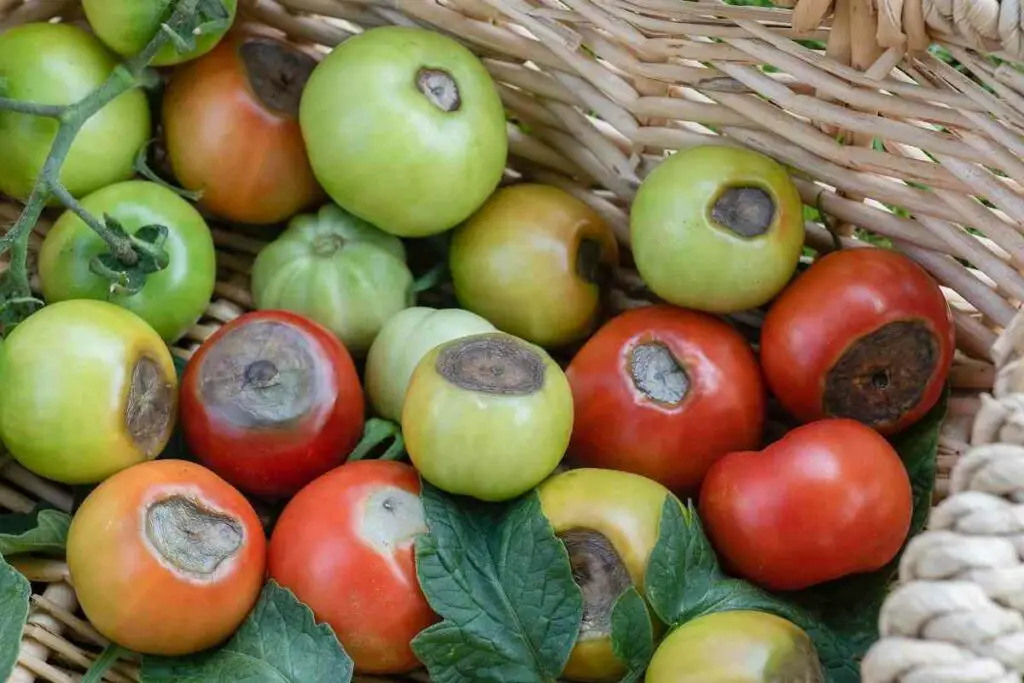
The primary cause of this condition is a lack of calcium in your plant’s diet.
Be sure to use soil measuring devices to pay close attention to:
- pH levels
- alkalinity
- and acidity
Crushed or powderized egg shells are great for raising the calcium levels in your soils as well.
2. Cracking
At one time or another, every gardener experiences cracking in their tomato fruits.
It looks as if someone cut the plant open and the inner cut simply dried out. Tomatoes that crack are the direct result of too much water.
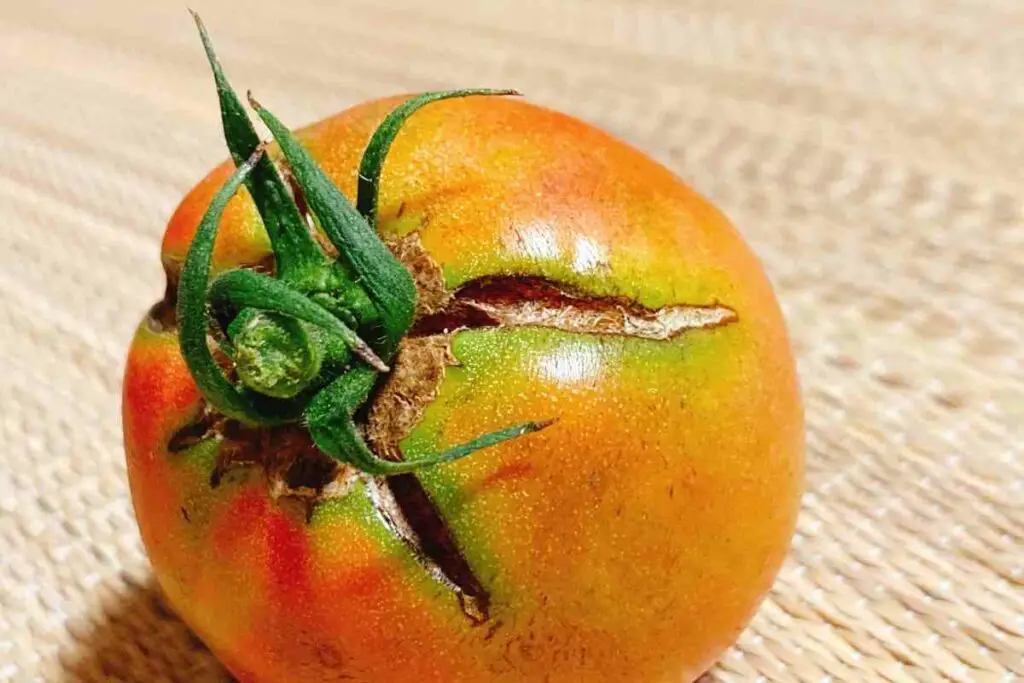
Whether that can be attributed to the rain or too much watering on your part, the only way to fix the problem is to ease back on the amount of water your tomatoes are receiving every day.
Remember – Water regularly and use mulch. If you’re getting a lot of rain, find a way to divert or aerate the soil better, so it’s not sitting in one place for too long.
There are also resistant varieties of tomatoes you may want to consider if you live in an environment where rain is pretty consistent.
Look for:
- Jet Star VF
- Daybreak
- or Marglobe
All Things Considered
It all sounds a bit overwhelming when you stop and think about the sheer volume of things that can affect your tomatoes.
This is especially true when you consider that this guide simply can’t cover everything. There are more diseases out there to contend with.
Most things can be avoided with the proper choice of seeds, vigilance, and properly maintaining the environment in your garden.
If you see a disease forming in a tomato plant, quickly identify it and remove the plant if necessary.
- How to Dry Basil Leaves: A Professional Guide
- Is an Avocado a Fruit or Vegetable? Simple Answer and Explanation
- Does Pineapple Have Seeds? Exploring the Anatomy of Pineapples
- Blooming Through Winter: Can I Grow Vegetables Indoors in the Winter?
- What Can You Grow in a Greenhouse All Year Round: A Guide to Year-Round Greenhouse Gardening
- Are Blueberries Blue? Debunking the Myth of Their Color












